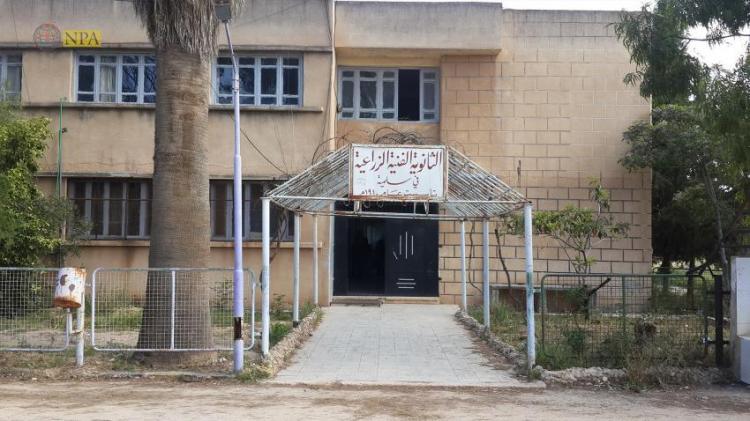Salamiyah Agricultural High School in Hama. The first agricultural school in the Arab World
The agricultural high school in Salamiyah (north-east of Hama governorate) is the first in the Arab world.
It was a destination for students from Syria and the neighboring Arab countries (Palestine, Iraq, Jordan, and Lebanon). Many of the figures who contributed to the agricultural renaissance in their countries later, had graduated from it.
Establishment
The school, located on the western side of the city of Salamiyah, which lasted for decades alone, was founded in 1910 to carry the flag of agricultural education in the Levant.
It passed in several stages through a hundred years ago. The study at the school continued from its opening until its closure in 1930, then to be reopened in 1943 by Decree No.101 of establishing an agricultural school and an agricultural center in Salamiyah to reform plants and seeds.
The school, which occupies an area of 650 dunums, is a landmark and an ancient educational building built of black basalt stone. The building has been allocated as a theater with a capacity of 500 people. It has a two-story building; the ground floor which is allocated for administration and still teeming with staff, while the upper floor is a dormitory for teachers and staff, opposite to a building contains students’ classrooms, which is used as a bookstore today.
School system
The education system was based on residential housing where students resided throughout the school year, then leave back for their families in the summer. The system was abolished in 1993, and the study was limited to young men. Until it gave way to young women between 1984 and 1985.
The school archive states that teaching began in 1909 before the collapse of the Ottoman Empire, and students were coming from different regions (Egypt, Yemen, Sudan, Mauritania, Chad, Senegal, Somalia and the Comoros).
Graduates
The school keeps nameplates of some Arab students who studied and graduated, showing the names of their cities alongside their names. There is also a board showing that the late Syrian president Adib al-Shishakli graduated from this school in the 1940s, the writer Muhammad al-Maghut, the Syrian writer Ahmad al-Jundi, and the Lebanese historian and the secondary principal of (1922) Wasfi Zakaria, all have studied there.
Today, the high school contains the two faculties of agricultural engineering and architecture. These two faculties have contributed to the accommodation of large numbers of students, especially from the countryside of Salamiyah, who depend on agriculture for their livelihood.
Hama-Sam Al-Ahmed – NPA

